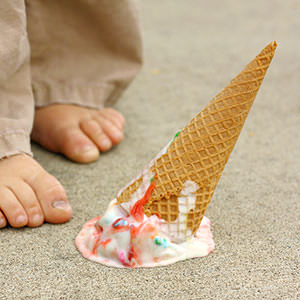Five Second Rule – Fact Or Fiction?
While the five second rule has the aura of superstition, science has certainly applied its scrutinizing eye to the idea more than once. When you consider the prevalence and severity of foodborne illnesses, that scholarly attention isn’t altogether surprising. We’ve probably all jokingly counted the seconds aloud as a friend scrambles to retrieve and consume a potato chip dropped on the floor, but microbial contamination isn’t a laughing matter.
Foodborne illness
According to the Centers for Disease Control and Prevention, foodborne illness strikes one in every six people in the U.S. every year.
A vast array of viruses, bacteria, and other pathogens can provoke more than 200 different kinds of food related disease.
As with so many subjects, the scientific verdict on the five second rule isn’t cut-and-dried.
The tide seemed to be turning against the rule’s validity over the past decade or so, but then a new study out of England, one that’s grabbed a fair amount of media attention, muddied the waters.
The Aston University study
The British study, performed by a student team out of Aston University’s School of Life and Health Sciences, under microbiology professor Anthony Hilton, considered the rate and degree of microbial contamination of different kinds of food dropped on different types of flooring. The microbes in question were two leading bacterial culprits in foodborne illness, Escherichia coli and Staphylococcus aureus.
The testing food materials, chosen because of their varying moistness, were biscuits, pasta, toast, and sticky candy. These were placed on tile, laminate/wood, and carpet for between 3 and 30 seconds, after which the researchers assessed how many bacteria had adhered to them.
The E. coli and S. aureus did indeed colonize the food. The interesting results concerned how quickly and to what extent that contamination occurred. The longer the food sat on the floor, the more bacteria it hosted, an intuitive finding perhaps, and one well aligned with the five second rule. Furthermore, the rate of bacterial transfer varied with flooring and with food moisture content.
Contamination proceeded more quickly on the laminate/wood and tile environments than on carpet, and with the candy and cooked pasta than the toast and biscuit.
Possible Takeaways
In a report on the study by Aston University, professor Hilton suggested that, although the data showed an undeniable risk of contracting a foodborne illness by eating morsels off the floor, bacterial transfer was inefficient and slow enough to lend at least some credence to the five second rule. Hilton’s inquiry also included a survey of public attitudes toward the five second rule.
According to his research, a whopping 87 percent of people polled admitted they’d eat food off the floor, a modest majority of them women. And of those ladies unafraid of downing dropped delectables, 81 percent expressed adherence to the five second rule.
Mixed Messages
Much previous research, for one thing, has demonstrated near-immediate contamination of dropped food (which, it should be noted, was reinforced in Hilton’s work).
A 2007 investigation out of Clemson University showed rapid, thorough transfer of Salmonella typhimurium to bologna and bread placed on tile, wood, and carpeted surfaces regardless of time interval (the study considered 5, 30, and 60 second periods).
In a March 2014, a National Geographic article comparing the Aston and Clemson research, Sarah Whitman-Salkin queried both Hilton and the latter study’s lead author, Paul Dawson, on the take-home message. Hilton and Dawson both agreed their respective data suggested prompt colonization of a dropped food item by bacteria.
The two differed, however, on whether the extent of that colonization within the initial five seconds of food-floor contact was sufficient to put a person who then ingests that food at risk of illness. Dawson claims it absolutely is, and compares habitual followers of the five second rule to drivers who don’t wear seat belts.
Hilton, meanwhile, thinks bacterial transfer is too inefficient to truly contaminate food in those first few seconds, on indoor floors of the material his study assessed, he’s quick to point out.













